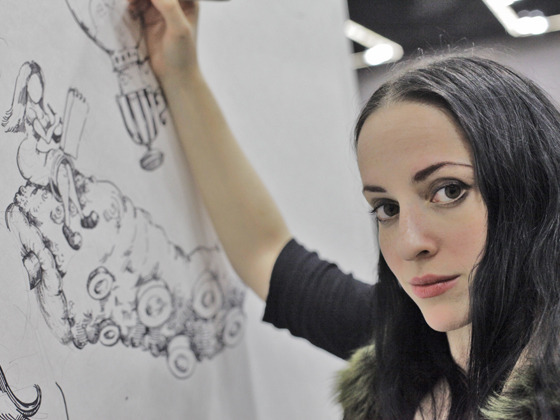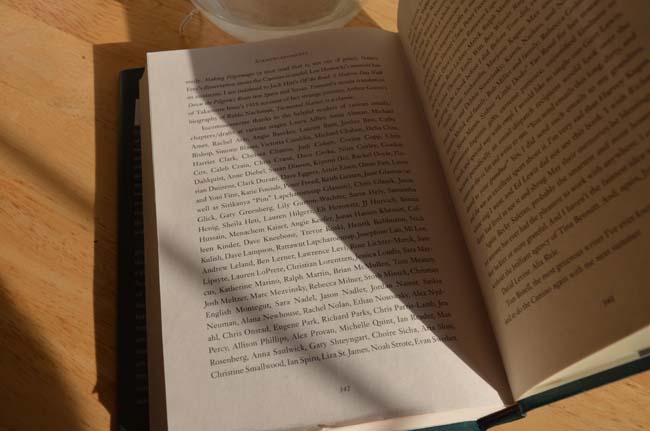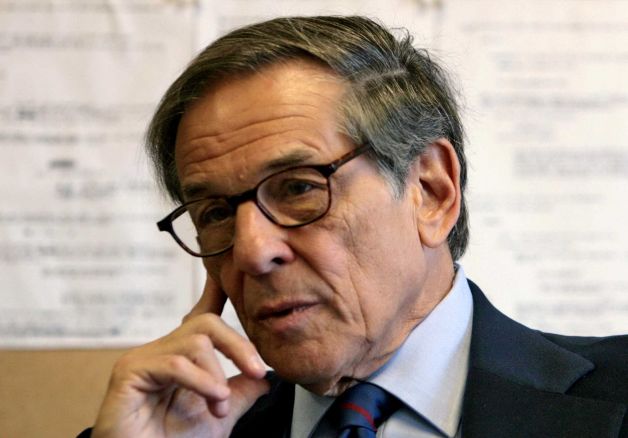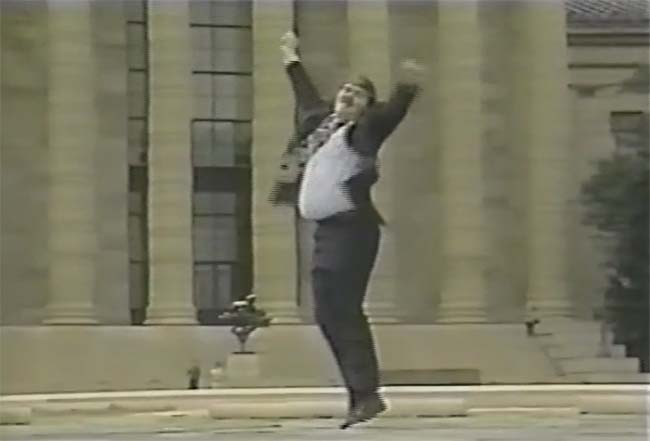Molly Crabapple appeared on The Bat Segundo Show #456. She is most recently the author of The Art of Molly Crabapple Volume 1: Week in Hell.
Listen: Play in new window | Download
Condition of Mr. Segundo: Wondering if he can start a Kickstarter campaign for someone to send him tequila money.
Author: Molly Crabapple
Subjects Discussed: Daily walks to McNally Jackson, the logistics of setting up the Week in Hell experiment, the logistics of sneaking people and materials in a hotel, eluding maids, Philippe Petit, the similarities and differences between photographers and visual artists, conversation and dreams as inspirational forces, aerial hoops, the Internet as an idea source, prototypes of the Week in Hell experiment, the necessity of changing up artistic routine, Susan Sontag, education as a birthright vs. education as an adult, The Bonfire of the Vanities, Dick Clark’s death and those who shamed people on Twitter for not knowing who Dick Clark is, the infinite storehouse of online knowledge, the benefits of accordion players in producing art, Kim Boekbinder, how performers inspire Crabapple, drawing faceless girlthings with parasols, Crabapple’s tendency towards the curved line, Scarlett Takes Manhattan, drawing an undersea Algonquin roundtable, Alexander Woollcott, illustrating in response to current events and the Arab Spring, the Wikileaks squid, Occupy Wall Street, pigs and depraved nightclubs, the first animals Crabapple was drawn to, the allure of drawing grotesque items, allegorical pity parties, bitching about people who are more successful, a thought experiment involving Napoleon having a pity party, despair, self-pity, and depression as inspirational forces, Kay Redfield Jamison, not having down time, avoiding repeating yourself, Damien Hirst, unethical business practices, saying no to certain corporate clients, feeling bad about drawing a topless picture of Hillary Clinton for a conservative publisher out of financial desperation, the lines between the artistic and the commercial, whoring out your heart of hearts, the myth of artistic purity, Howard Roark and the Randian ideal, nude modeling, the need for expensive promotional campaigns, how a young and emerging artist who can’t do nude modeling can survive when she first starts out, retail jobs, New York as a place hostile to certain strains of art, Zoe Strauss, being declared “not a real artist” by The New York Times Book Review, Luc Sante’s Low Life, whether research bogs down art, and the value of lipstick planted upon art.
EXCERPT FROM SHOW:
Correspondent: I wanted to ask you about the logistics of this Week in Hell experiment. The first thing I have to say, in seeing the television covered up and in seeing the thermostat on the wall, what negotiations were there with the hotel management to actually allow this to happen?
Crabapple: Oh, we didn’t ask the hotel.
Correspondent: (laughs) Oh, you didn’t? They found out while it was happening?
Crabapple: They didn’t find out at all.
Correspondent: Really?
Crabapple: This was entirely surreptitiously.
Correspondent: Wow. (laughs)
Crabapple: I will probably send them a copy of the book. The reason was that we initially wanted to do it at another hotel and we had all this money from the Kickstarter. And we were like, “Golly, mister, here’s $4,500 to do our crazy art project.” And they were like, “Oh no! You must speak with our creative directors to see if you’re in line with our creative vision.” And I thought that was bullshit. So I just dressed up like a fancy person and borrowed a Ralph Lauren suitcase to hide all those rolls of paper in.
Correspondent: Really? (laughs) It’s like a bank heist.
Crabapple: We totally ran it like a bank heist. Snuck everything in. Told the maid not to come all week.
Correspondent: Was that the 57 minutes that you spent eluding the maid, which you refer to?
Crabapple: Yes! Exactly!
Correspondent: Wow. So you actually had to plan this like a bank heist. I mean, I understand. I’ve done some of these interviews in hotels and I’m told that I can’t actually sit down with these microphones with another person. Just having a conversation. So why did you have to go ahead and do this almost like you were shooting without a film permit? What steps did you take to plan this bank heist?
Crabapple: So me and Melissa, who’s my amazing assistant.
Correspondent: Yes.
Crabapple: Who is actually the brains behind all of my harebrained ideas. We made a long list of everything that could possibly go wrong. We did everything from testing the right type of tape to hold the paper off, that wouldn’t peel off the paint, to getting the right fancy people suitcases. So we wouldn’t look all sketchy sneaking into the Gramercy Park Hotel with duffel bags.
Correspondent: Did you have any consultants say, “Hey, you actually look professional enough to pass muster with the scrupulous guards”?
Crabapple: (laughs) What was so funny was that I had this whole outfit, which can only be described as rich people’s whore.
Correspondent: (laughs)
Crabapple: It was all Alexander McQueen and Louis Vuittons and shit. And I went in and everybody is wearing sweatpants. And I was so disappointed.
Correspondent: Well, these tests about not peeling the paint off the walls. And the paper itself. The specific markers you used. I’m wondering. What were the logistics here? I’m really curious.
Crabapple: The paper and markers?
Correspondent: Yeah. How many types of paper did you have to go through?
Crabapple: We didn’t go through types of paper. Because I got that sponsored.
Correspondent: Okay.
Crabapple: It was more — Melissa’s whole wall was covered with different strands of paper being held up with different types of tape.
Correspondent: Fantastic. What other logistics were needed aside from this? Anything else that you’re missing?
Crabapple: We had tons and tons of friends sneaking in the entire week and we found a back staircase for them to sneak up. Because we didn’t — I mean, especially when we had the wild closing party.
Correspondent: This is like Philippe Petit walking across the World Trade Center. How he had friends gradually get all the supplies up over the course of several weeks in advance. Was it similar here?
Crabapple: It was kind of like that. I even had one of my friends go into the hotel, looking super-sketchy so that he could see how much scrutiny he would get.
Correspondent: (laughs) Oh really? Did you have any input into his skeeziness?
Crabapple: No, we just went with his natural dress.
Correspondent: Oh, I see. I got it. Now for many of the visitors who came into this hotel room during this week, I’m wondering if you asked permission to draw them. I mean, this raises an interesting question for me. Because you have one particular drawing that’s part of this elaborate project where you have the photographers, who are drawn like lizards to your friend. Because they’re ogling her with their cameras. And so I’m wondering. This made me think. How much is any artist, who illustrates or sketches or paints, different from, say, a photographer of any stripe? What are your thoughts on this? And what are your thoughts in terms of drawing people at will who happen to come into the room? Or was that the agreement for anyone who came through the room?
Crabapple: Well, people usually want to be drawn by me. But that’s actually an awesome question. I’ve always thought that the instinct of the photographer and the visual artist are very similar — in that we’re generally twitchy weirdos who want to hang out with the cool people and we use our camera or our sketchpad as a way to kind of bribe the cool people to hang out with us. But the thing is that photography has become so ubiquitous that people don’t feel impressed anymore by having their picture taken. And, in fact, it can become like really grabby and soul-stealing. Like — I used to march a lot at the [Coney Island] Mermaid Day Parade and sometimes there would be such a crush of photographers — like yelling at you how to pose and demanding that you arch your back this way or demanding that you look at them — that it wasn’t a fun thing at all. Whereas most people only get drawn a few times in their life. So it still has a novelty to it. And I’ve always kind of used my sketchpad as this key to sneak into scenes where I really didn’t belong.
Correspondent: But stealing another person’s soul. It seems to me that you’ve always been very conscious about this. Even from the Dr. Sketchy stuff. So my question is: how do we return the balance so that the person who is photographed or the person who is drawn actually feels comfortable and doesn’t feel as if she has her soul stolen through the process of art?
Crabapple: Well, with me, what I always try to do is I always try and capture the person’s personality, as well as just how hot they look. Like when I did the picture of Stoya on that door, I’m talking to her. And I do like her beautiful, beautiful, perfect, mathematically perfect face. Then I also — since I’m friends with her, I draw her making her own costumes — she’s a brilliant costumer — and on her aerial hoop. And then I talk with her. And she complains about obnoxious photographers. And so I draw them swarming around her.
Correspondent: So much of the input came from what she was telling you. As you were actually drawing her.
Crabapple: Exactly. It was just as much a portrait of our conversation.
Correspondent: In terms of the hoop, that was based off of memory. Did you have any source material for that?
Crabapple: That was based off of memory. I’ve seen a lot of aerialists in my time.
Correspondent: You note that you were drawing the top of the wall at the very beginning of this. So that you would have some inspiration for your dreams. And it seems to me that between that and the influx of stories that you had plenty of inspiration. This leads me to ask, well, what do you do if you run out of ideas to sketch during this situation?
Crabapple: I asked the Internet. I had a livestream going along. And my livestream audience would be saying, “Draw hippos on the moon! Draw undersea Algonquin round table!” And I would put that in if I was running out of inspiration.
Correspondent: So did you feel that sometimes the list of suggestions was too intrusive a presence? Or there were a lot of bad ideas sifting through this? Were you playing Beat the Clock because you had only a week to cover this entire surface?
Crabapple: There was a certain amount of Beat the Clock going on. I drew pretty much every waking hour. Like in the back of all my glamorous friends partying, there was usually me standing up on top of a shelf frantically sketching things.
Correspondent: Really? Well, were there any trial runs of you sketching things? Like say in your bathroom for half a day? Or anything like that?
Crabapple: I was at Stumptown Comics Festival. They had me as a guest. And I didn’t want to sit behind a table and sign things. Because I don’t know. I felt like I was at a craft fair or something. So instead I was like, “Why don’t you just hang up a giant piece of paper where my table would be and I’ll just draw on it over the course of the convention”? And I did a six foot by six foot drawing.
Correspondent: So that was the trial run.
Crabapple: That was where I got the idea.
Correspondent: Were there any other runs before that? Maybe three by three?
Crabapple: (laughs) That’s just my career.
Correspondent: Exactly. So what do you need often to keep your routine changed up? I mean, you suggested that this was the end of a particular period in your life. It was sort of your renouncement of pen and ink. How often do you need to change things up in order to stay fresh as an artist? I’m curious. Do you anticipate the next move? Does it come organically? Do you just do it and it becomes ambitious by default?
Crabapple: I’m not a very thoughtful person. And I’m incapable of thinking in Five Year Plans. And also I’m kind of young. So I don’t really know — like I just don’t have that many periods in my work. I don’t know. I was in this deep fucked up almost clinical depression when I was 27. And I don’t know why. My brain was just wonky. And I needed to do something to do violence to all of this stuff in my art that I was tired of. And this was how I did it. And I’m sure I’ll need to do it again. But I don’t know when or how.
The Bat Segundo Show #456: Molly Crabapple (Download MP3)




